With so many unique African safari destinations to choose from, choosing the best place to go on safari is no easy feat. That’s why we’ve put together this detailed list, filled with expert tips, to help you plan your dream safari trip.
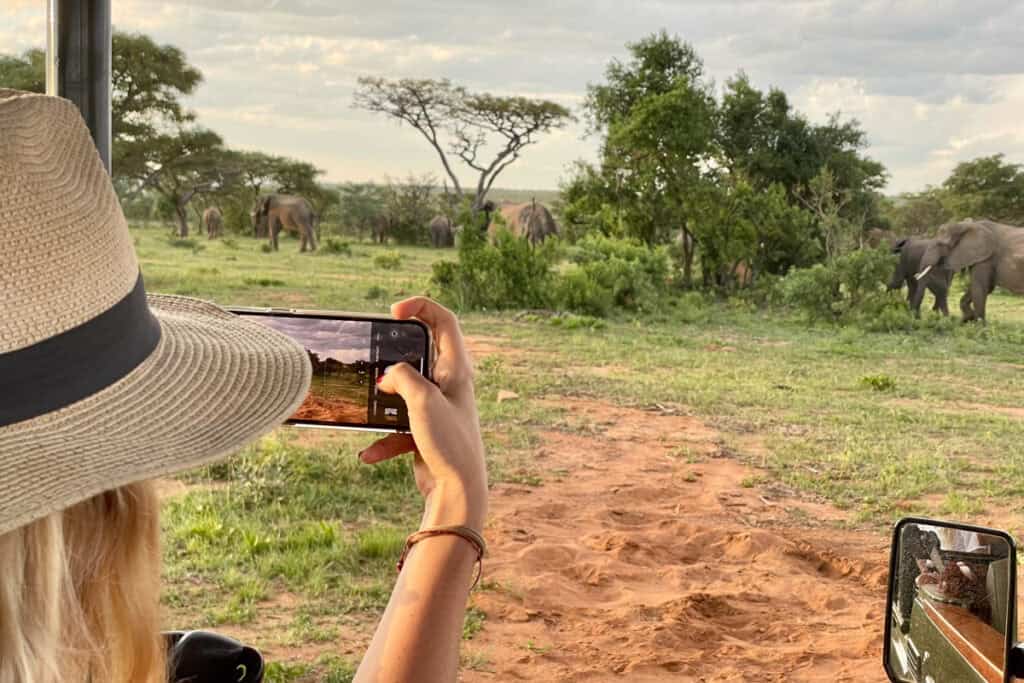
Written by guest author: Ella McKendrick
Blessed with majestic landscapes, a wonderful climate, and packed with some of the planet’s most diverse and dense wildlife populations, Africa is undoubtedly one of—if not the—best place to go on safari.
However, with so many countries and parks to choose from, deciding where to go on safari can be daunting for anyone, especially first-timers – I know it was for me!
To complicate matters further, every safari destination offers something unique.
That’s where I come in! I traveled to Africa for the first time over twelve years ago and since my first expedition through Zambia have now visited 10+ countries across Africa and been on more safaris than I can count.
In this article, we’ll break down my absolute favorite safari destinations in Africa, from the best places to see ‘the Big Five’ to more unique safari experiences for those of you looking for something different.
African Safari Destinations Guide
Here’s what we cover in this guide. Click on any of the links below to jump down to that section, or keep scrolling to get all the details.
- Why trust me?
- My experience
- Top recommendation
- Best safari destinations in Africa
- FAQs
- Special Discount!
Safari Packing Checklist
If you’re planning an African safari, we have the ultimate resource for you!
This FREE PDF download includes everything you’re going to want to pack for your African safari, including what NOT to bring, plus tons of insider tips!
Sign up for our ultimate safari packing list now and get a copy sent straight to your inbox.
Why trust me?
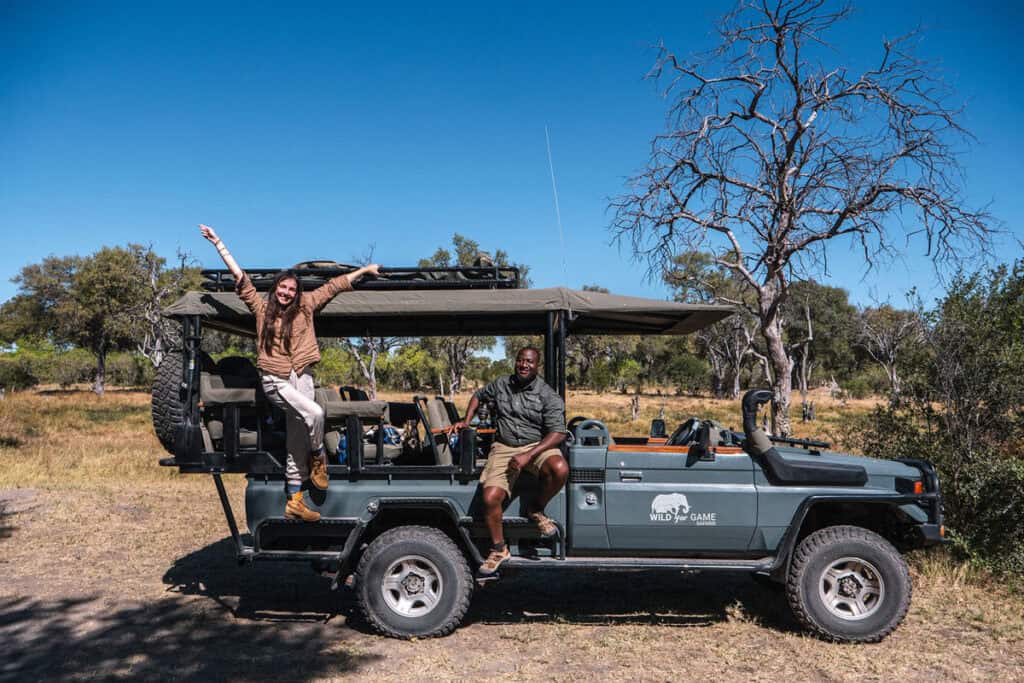
Quite frankly, I’m a safari-addict!
When I was growing up I’d often find myself glued to my TV screen, watching nature documentaries.
Africa particularly fascinated me, partly down to the fact that my dad spent years living in the bush and would tell me wild tales of his expeditions in South Africa and Botswana. I knew that one day I wanted to have similar experiences.
I first visited Africa when I was 17 years old. It was my first big trip without my family but I wasn’t afraid. I was finally going to be in Africa!
I spent the week traversing the Zambezi which straddles the border between Zambia and Zimbabwe, dodging hippos with my canoe, embarking on game drives and meeting some wonderful people.
I fell in love with the continent and when the trip was over vowed to come back as soon as I could.
The following year, after finishing my schooling, I spent my summer volunteering at a wildlife sanctuary in Namibia. Then, each year after, I visited the continent as much as I could, visiting more than 10 African countries to date, including all the best safari destinations.
My experience on safari in Africa

I must have spent several hundred hours on safari at this point – perhaps even getting on for thousands! Many people ask me if I ever get bored of going on safari, rolling my eyes at yet another elephant or lion. I simply tell them they’re bonkers – no two days on safari are ever the same!
My African safari adventures have taken me from the rolling grasslands of the Serengeti to the beautiful waterways of the Okavango Delta, the desolate vastness of Etosha to the shadow of Kilimanjaro where elephants can be found by the hundreds.
Each location is completely different and has its own perks and personality.
Without further ado, let’s hop into some of my favorites!
Top recommendation: Best place to go on safari in Africa
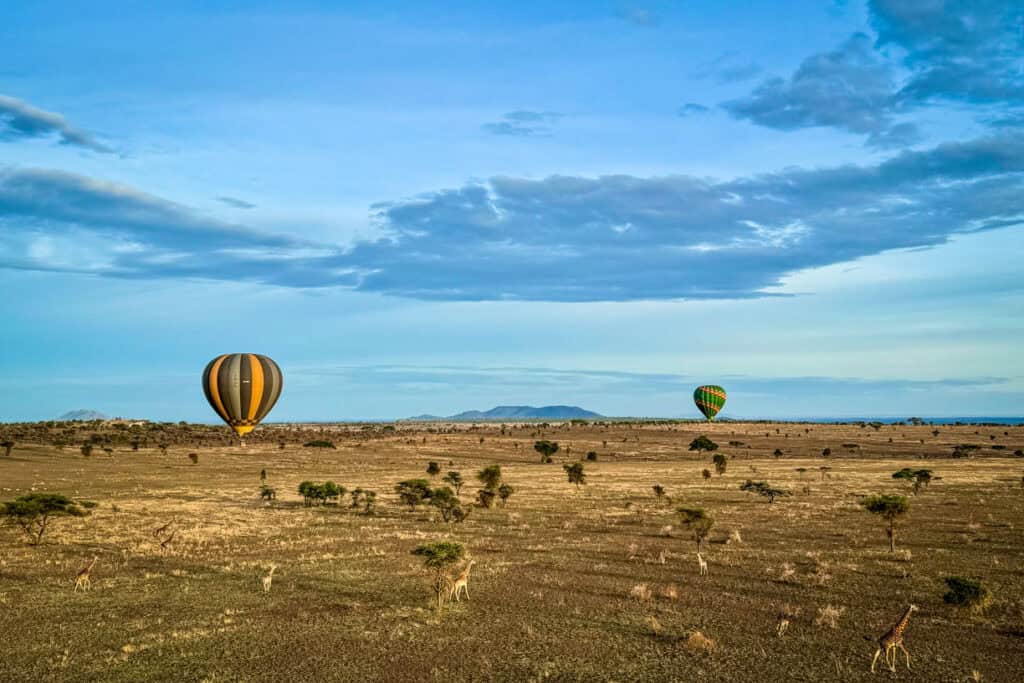
The best place to go on safari in my opinion is Serengeti National Park. If you could visit only one game park in your life, the Serengeti would be my top recommendation!
If seeing the Big Five is your top priority:
- South Africa’s iconic Kruger National Park
- Tanzania’s Serengeti National Park and Ngorongoro Crater
- Kenya’s famed Maasai Mara Reserve
- Botswana’s Chobe National Park and the Okavango Delta in Moremi Game Reserve
These all rate among the best safari destinations in the world. Kruger and Serengeti, in particular, are ideal for first-timers.
Meanwhile, if you want to see the spectacular Great Wildebeest Migration:
- Serengeti National Park in northern Tanzania
- Kenya’s Maasai Mara Park
Witnessing over two million wildebeest, zebras, and various antelope thundering across the plains for months in search of greener pastures is a spectacle. The Mara River crossings in particular are something no one can ever forget.
And, for a unique safari experience:
- Bwindi Impenetrable Forest for gorilla trekking in Uganda
- Volcanoes National Park to see the gorillas and golden monkeys in Rawanda
But, don’t just take my word for it…
I’ve rounded up the top safari destinations in Africa so you can decide for yourself where you want to go on your next big adventure!
Psst! Already convinced you want to go on safari in Tanzania? Jump to the bottom and grab our special discount offer, just for our readers!
1. Serengeti National Park, Tanzania

- Highlights: The Great Migration is one of the world’s best natural spectacles. Large concentrations of big cats and the Big Five throughout the park.
- When to go: June – September for the Great Migration Mara River crossing and January and February in the south
- Who is it best for: Everyone. If you could visit only one game park in your life, the Serengeti would be my recommendation!
Serengeti is massive with a multi-ecosystem landscape in east Africa that you could spend an entire week exploring. All the Big Five are here. Lions, elephants, buffalos, cheetahs, zebras, hippos, crocs, giraffes, primates, eland, kudu, impala, and other gazelles are almost guaranteed to be seen on most game drives.
Throughout much of the year, you can witness the Great Migration here. This is when millions of wildebeest, zebras, and antelope set off from the southern plains towards the greener pastures of the north, crossing several rivers including the world-renowned Mara River.
The best time to visit the Serengeti from June through September for the Great Migration Mara River crossing and January and February in the south to witness loads of new-born animals as this is when the wildebeest give birth, big cat activity, and abundant birdlife.
Lodges in Serengeti National Park
When it comes to lodging options you are spoilt for choice in Serengeti National Park. Basing yourself within the vast park is a must, placing you close to the prime game viewing spots.
Splurge stay: Four Seasons Lodge
The secluded Four Seasons Lodge is highly recommended, offering air-conditioned rooms, suites, and villas, sparing no luxury while putting you in amongst the wildlife. The lodge is in the Seronera area, famous for its high concentration of big cats and vast savannahs – perfect for looking down from a hot air balloon.
Mid-range stay: Anantya Lodge
There are a range of tented camps dotted throughout the park. I’d personally recommend staying in a tented camp over a lodge as you feel that much closer to nature and can hear the sounds of the wild at night. Anantya lodge is a great option.
Budget-friendly stay: Africa Safari Maasai Boma Camping
For a really unique experience for budget-conscious travelers, check out Maasai Boma Camping. They offer bare-bones accommodation in grass roof style huts, but the property does have other amenities such as a traditional restaurant with a terrace and excellent views.
Psst! Find out exactly how much a Tanzania safari costs… We broke down all of the costs for different budget ranges so you know exactly what you’re paying for!
2. Kruger National Park, South Africa

- Highlights: The Big Five – you could see them several times on one game drive. Loads of leopards and rhinos. Easily accessible by road or air. Good roads make it ideal for self-drive safaris and no special 4×4 vehicles are required.
- When to go: Best in the dry season (May – September) when the grasses are short and animals easier to spot.
- Avoid the July school holidays as it gets pretty busy.
- Who is it best for: Families, first-timers and budget-conscious travelers
For a one-stop safari park where you can see basically every bucket list species in Africa and still be close to decent infrastructure, South Africa’s iconic Kruger National Park is hard to beat. And if you want to combine your safari with a quick trip to one of the world’s most beautiful cities, Cape Town is a mere 2.5-hour flight.
Kruger is vast, with varied landscapes attracting a wide range of animals including lions, leopards, cheetahs, elephants, buffalos, rhinos, hippos, crocs, zebras, giraffes, wildebeest, and millions of springbok—South Africa’s national animal.
Leopards can be seen more regularly here than in most parks. In fact, the Sabi Sands Reserve is said to have the world’s highest concentration of leopards.
Another unique attraction of Kruger is its white lions found in the andBeyond Ngala Reserve a little to the north. With nearly 3,000 white and black rhinos, Kruger also has the highest rhino population in the world.
The accessible infrastructure is perfect for families or first-timers. The favorable exchange rate also makes South Africa one of the best countries for a safari for budget-conscious travelers.
Greater Kruger Area
Kruger is actually made up of several parts, the main Kruger National Park and neighboring concessions. These together make up the Greater Kruger Area.
There are no fences between parks so animals can move freely from one area to another. The only difference is that the main national park is run by the government whereas the concessions such as Sabi Sands are privately owned.
You will get a quieter experience within one of the concessions as only lodge guests can embark on game drives here.
Lodges in Kruger National Park & Greater Kruger Area
Kruger has many lodging options, ranging from luxury to basic self-catering camps. Some government-run (SANparks) camps may not be well-run so be sure to check recent guest reviews before booking.
Splurge stay: Lion Sands Narina Lodge
For an authentic safari with all the luxuries thrown in, the Sabi Sands Private Game Reserve offers a range of ultra-luxurious camps, unparalleled wildlife viewing, and all the opulence you can handle. Lion Sands Narina Lodge is one of them. Being in a private reserve, it’s also a lot quieter than the national park, offering a more personalized safari experience.
Unique stay: Kruger Shalati – Train on the Bridge
This first-of-its-kind unique safari lodge in the Greater Kruger Area is actually a converted train, which has been permanently parked on a bridge suspended over the Sabie River. The boutique lodge features 31 rooms, including 27 train carriage suites, and an infinity pool.
Mid-range stay: Hoyo Hoyo Safari Lodge
One of just a handful of lodges located within Kruger National Park (in a private concession), Hoyo Hoyo is a good mid-range option. The 5-star lodge offers luxury accommodation in air-conditioned suites with private decks and stone bathtubs. All meals and game drives are included, making this an easy trip to plan.
Mid-range stay: Langa Langa Tented Safari Camp
Located in the Sabi Sands Game Reserve in the Greater Kruger Area, this is one of the most affordable options within the private reserve. Langa Langa Tented Camp offers air-conditioned private tents with ensuite bathrooms.
Budget stay: Orpen Rest Camp
The Orpen Rest Camp is a great budget-friendly option. Self-contained thatched cottages sleep 2-3 people and have a shared kitchen and bathrooms. Alternatively, larger cottages with air-conditioning and en-suite bathrooms sleep up to 6 people. Orpen Camp is conveniently located at the gates of the central Kruger region, with a grocery shop and fuel station nearby. They also arrange game drives, nature walks, and night drives.
3. Maasai Mara National Reserve, Kenya
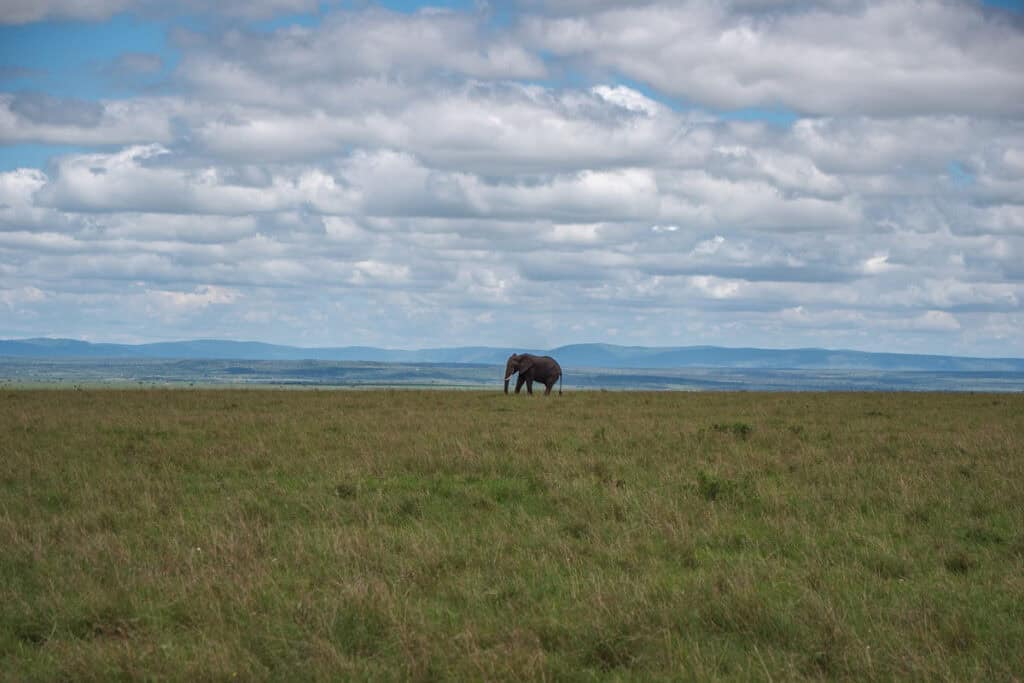
- Highlights: The Big Five, plus a high concentration of big cats and smaller predators. The Great Migration and especially the Mara River crossing is one of the world’s greatest spectacles. The vast flat and gentle-sloping grasslands make spotting wildlife easy.
- When to go: June – October is dry season and the Great Migration
- Avoid the long wet season (March to May)!
- Who is it best for: Wildlife photographers and first-time safari-goers
For anyone wondering where to go on safari to see the great Wildebeest Migration, the Maasai Mara National Reserve should be high on your list. This is when huge migrating herds make their way across the crocodile-infested Mara River and can be found between July and October each year.
The Maasai Mara National Reserve has one of the densest populations of animals in the world, including the Big Five. It is especially renowned for its large concentration of big predators, such as lions, leopards, and cheetahs.
You can also see hyenas, hippos, crocs, zebras, giraffes, wildebeest, eland, impala, and 500 species of birds.
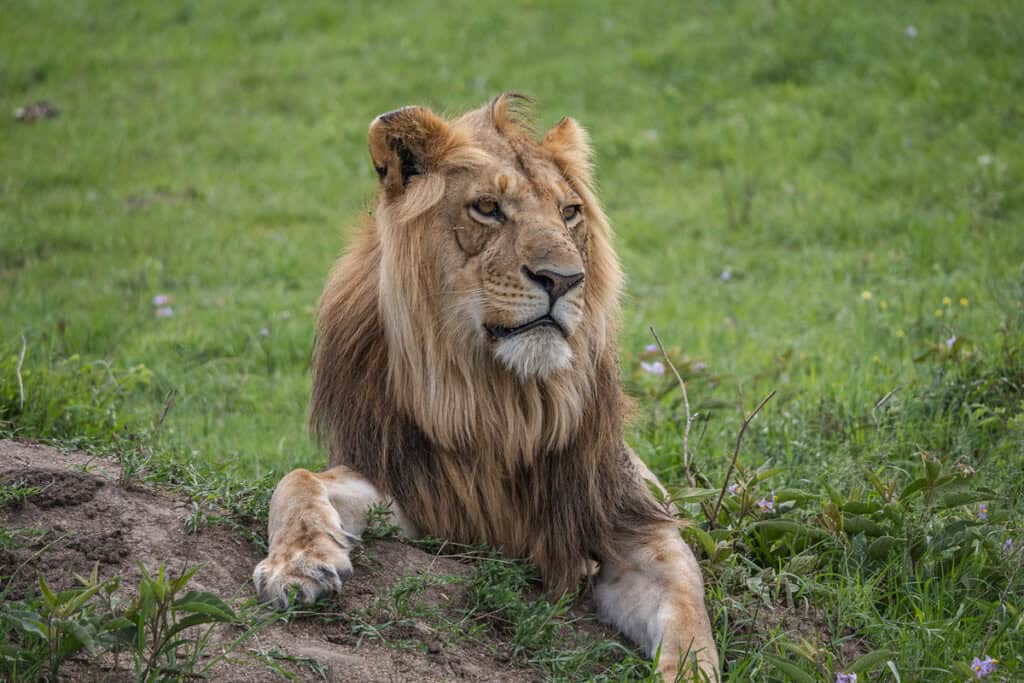
The best time to visit the Maasai Mara is during the long dry season between June and October, when the weather is great and the grasses are short, making spotting animals easy. It is also when the Great Migration is in full swing; the herds start arriving at the Mara River around July, August, and September.
January and February are also a good time to go as the weather is good and the vegetation is lush and green from the previous rains, creating beautiful backdrops for photographers. It is also the bird courting and nesting season when they’re in the brightest plumage and many migratory birds from the northern hemisphere are present.
The compact terrain makes Maasai Mara an excellent place for first-timers wishing to see a diverse range and huge concentrations of animals. Wildlife photographers after action shots of predators on the hunt or dramatic river crossings. Also, it’s an excellent park to embark on a hot air balloon ride.
Lodges in Masai Mara National Reserve
This prime wildlife safari destination has countless lodges, hotels, and camps scattered within and on the outskirts of the Maasai Mara National Reserve that suit all tastes and budgets. A visit to a Maasai cultural village is a must-do when visiting this park.
Splurge stay: Sanctuary Olonana Lodge
Sanctuary Olonana Lodge looks onto the game-rich plains of the Maasai Mara. The spacious glass-sided suites are perfect for couples or families, with all meals, local drinks, and two daily game drives included. Other activities such as hot-air balloon rides, boat cruises, and cultural tours can also be arranged.
Mid-range stay: Karen Blixen Camp
For a more affordable mid-range lodge, the Karen Blixen Camp is perfectly located alongside the Mara River with wonderful views of the wildlife, especially hippos. Raised tents are suitable for couples or families, each with a private deck. Local and European-style meals are served in their gardens.
Budget-friendly stay: Basecamp Maasai Mara
For a budget-friendly option, Basecamp Maasai Mara offers excellent value for money and great safari experiences. A group of tented suites with various sleeping configurations line the riverbank, each with its own bathroom and a shielded private deck. Game drives, meals, mineral water, and airport transfers are included in their rates.
4. Okavango Delta – Moremi Game Reserve, Botswana
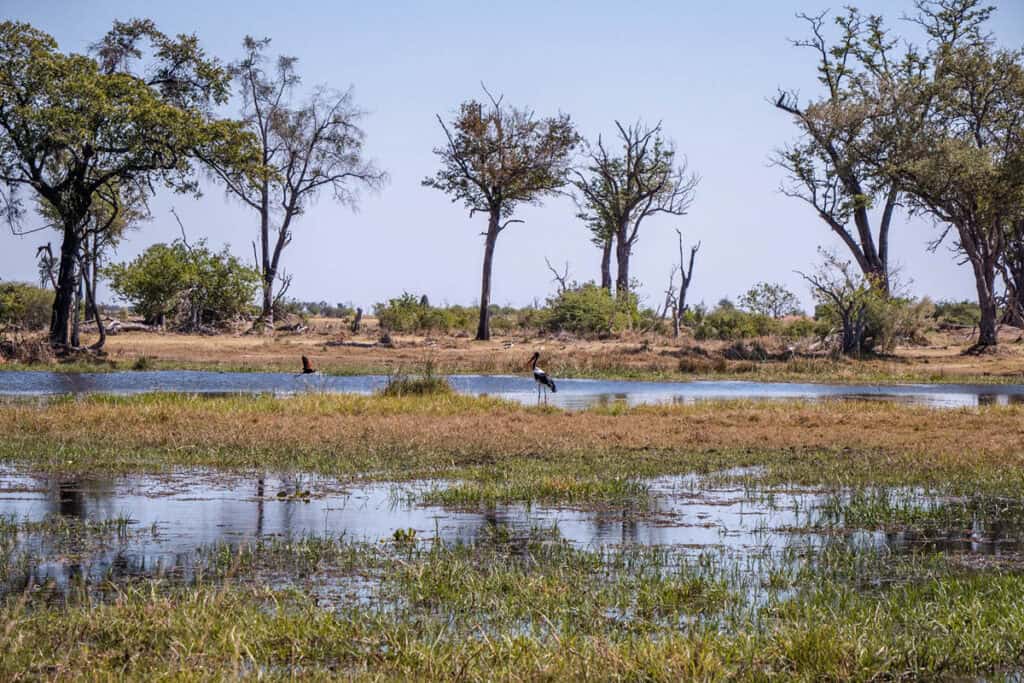
- Highlights: Incredible density of wildlife. It’s one of the best places to see wild dogs. A wide range of activities is available, including boating, fishing, birding, photography, walking safaris, and game drives.
- When to go: All year round. The sun shines all the time here.
- Who is it best for: Experienced safari enthusiasts with a healthy budget
Fed by the Okavango River which comes from the highlands of Angola, Moremi Game Reserve is a maze of river tributaries, lagoons, and wetlands on what’s known as the Okavango Delta.
The delta provides the lifeline for virtually thousands of animal, bird, reptile, fish, and plant species found in this 1,900 square mile oasis in southern Africa.
Around these life-giving waters, you can find lions, leopards, cheetahs, wild dogs, elephants, buffalos, zebras, giraffes, hippos, crocs, and tons of buck and bird species.
Whilst white and black rhinos have been reintroduced after being poached to near extinction, they can only be found on a remote island (to ensure their protection) so unless you specifically visit this sanctuary, you won’t encounter any on your safari.
Botswana is one of the most expensive countries to go on safari as the country has adopted the model of low-impact high-value tourism. This means that there are much fewer people on safari here than other countries. It also means that it isn’t a very budget-friendly destination.
The Okavango Delta is also quite remote. I’d recommend Moremi Game Reserve for slightly more experienced safari enthusiasts who have a reasonable budget.
Lodges in Moremi Game Reserve
Unfortunately, the remote area makes accommodation fairly expensive, so don’t expect budget-friendly options here.
Splurge stay: Little Mombo Camp
Situated almost in the center of the delta, the luxury Little Mombo Camp overlooks one of the densest wildlife populations in Botswana. Three private raised suites look onto the animal-rich floodplains, each with indoor and outdoor showers and flush toilets. The main camp has a pool, lounge, boma, and dining area.
Mid-range stay: Sagani Safari Lodge
Among the cheaper options, the Sagani Safari Lodge is situated on the northeastern reaches of the delta, looking onto a lagoon and hippo-filled waterway. They have 17 standard and luxury classically furnished tents, all with private bathrooms. All meals, 2 daily safari drives, and airstrip transfers are included in their rates.
5. Ngorongoro Crater, Tanzania
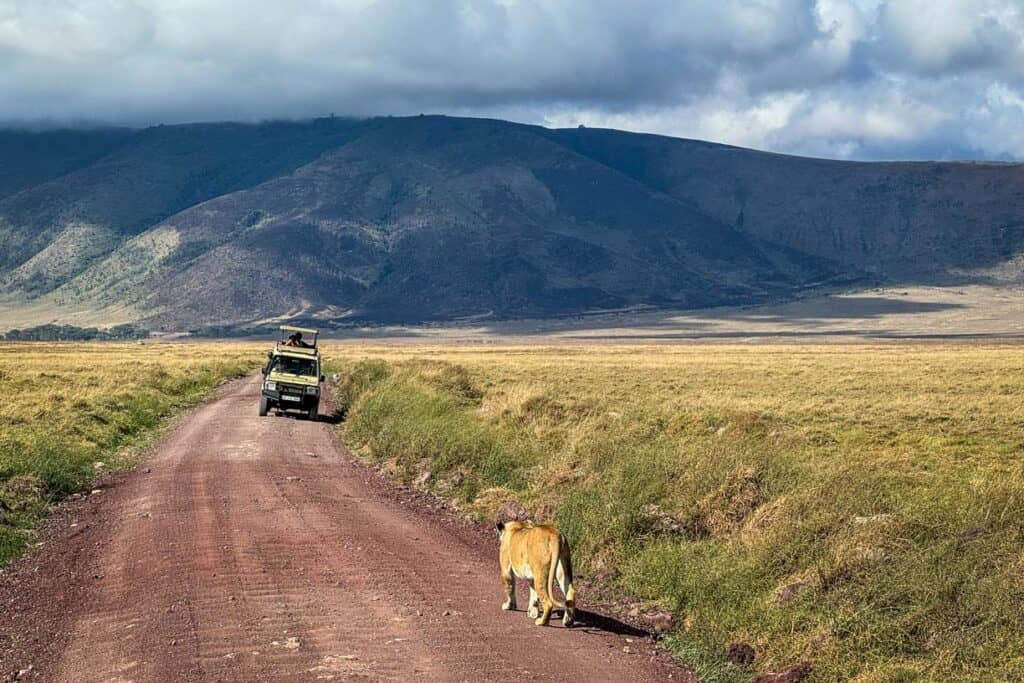
- Highlights: Dense population of lions and the rest of the Big Five gang. A good chance of seeing black rhinos. Magadi Lake attracts a vast number of birds including huge colonies of flamingos. Breathtaking scenery and the flat terrain also allows easy spotting of wildlife.
- When to go: Best during the dry season (June – September) but as no migration takes place, all animals can be viewed all year round.
- Who is it best for: Safari-goers on Tanzania’s Northern Circuit
We can’t talk about the best place to go on safari in Africa without mentioning the epic Ngorongoro Crater. With a completely unique landscape and extremely high density of wildlife, including the highest concentration of lions in the world, it’s no surprise that many Tanzanian safari itineraries include this ‘Garden of Eden.’
Just picture this: A steep circular crater wall some 2,000 feet in height and 12 miles in diameter, surrounding a vast landscape of grasslands, wooded areas, and a lake, packed with 25,000 animals and 550 species of birds.

Among the 100 or so animal species found in the crater, you’re almost certain to see lions, elephants, buffalos, hippos, cheetahs, wildebeest, zebras, and tons of antelope in large numbers. Leopards are also abundant, but their secretive nature does not always guarantee a sighting.
Safari goers will fall in love with this picturesque park. Being small in size, it’s possible to spot the Big Five and almost all other species on a single game drive, so it’s also ideal for visitors on short itineraries.
It’s also part of the Northern Tanzania safari circuit, which includes includes the Serengeti, Ngorongoro Crater, Mount Kilimanjaro, Lake Manyara National Park, Tarangire National Park, Arusha National Park, Olduvai Gorge, and Mkomazi National Park.
This region is a great destination for safari-goers who are comfortable moving around and want to see a lot of different parks in one trip.
Lodges in Ngorongoro Crater
While there are no lodges within the crater itself, a number of lodges that cater to all tastes and budgets are scattered around the rim.
Splurge stay: Lion’s Paw
For a luxurious safari experience, Lion’s Paw is the best option. Perched on the crater rim, this gorgeous tented camp has unparalleled views of the crater floor. The camp is surrounded by forests and it’s not uncommon to see animals wandering past your tent, including elephants and giraffes.
Mid-range stay: Ang’ata Ngorongoro Camp
Set on the eastern side of the Ngorongoro Crater’s rim, Ang’ata Camp is a small boutique camp with just 8 guest tents. Each accommodation features an ensuite bathroom and private terrace. The views of the bush are incredible and meals are served in the dining tent onsite.
Budget-friendly stay: Rhino Lodge
For a rustic but comfortable budget-friendly option, the Rhino Lodge is perfect. We loved it, and seemingly the wildlife loved it too—elephants, buffalos, and other animals walked through the gardens regularly. Semi-detached rooms provide privacy with wooden decks overlooking the crater.
Psst! Plan the perfect trip with our ultimate Tanzania safari itinerary! And jump to the bottom for a special discount offer on booking your Tanzania safari!
6. Chobe National Park, Botswana

- Highlights: Tons of elephants. Big concentration of lions and buffalos. Boating, fishing, and birding safaris here are epic.
- When to go: All year round with peak wildlife viewing from May – October
- Who is it best for: Nature enthusiasts (especially elephant lovers!) looking for a unique experience
Situated in northern Botswana, Chobe National Park is a gem that every serious wildlife enthusiast should visit at least once.
The landscape of Chobe, consisting of grasslands and densely wooded forests, is dominated and nourished by its many waterways and marshes. Meanwhile, dry open savannahs and dense bushlands attract a different variety of wildlife.
Chobe’s greatest asset is its elephants, with some 150,000 individuals passing through here every year. Seeing lions, leopards, zebras, giraffes, cheetahs, hyenas, hippos, crocs, kudu, impala, plus over 400 species of birds are common too.
For a unique experience, several cruise boats, similar to the Nile cruisers in Egypt, offer a once-in-a-lifetime boating safari. The boats navigate along the Chobe River, offering a special perspective of the animals here.
The Chobe Riverfront area is extremely accessible so is great for first-timers and self-drivers, plus its close proximity to Kasane town means it’s much more budget-friendly than the Okavango Delta. For more adventurous travelers, Savuti in the heart of the park is fantastic as it has a healthy population of lions who have been known to take down elephants!
Chobe is also a good choice as a safari destination due to its proximity to Victoria Falls and many of the lodges here offer packages or day trips to see the great falls on the Zambia/Zimbabwe border.
Lodges in Chobe National Park
There are many lodges and camps in Chobe, mostly around the Chobe River.
Splurge stay: Sanctuary Chobe Chilwero Lodge
Among the higher-end lodges, the Sanctuary Chobe Chilwero Lodge is conveniently situated a few minutes’ drive from the Kasane International Airport. Set on a hill overlooking the Chobe River, their spacious air-conditioned cottages have spa-like bathrooms, a private garden, and a balcony with spectacular views over the floodplains.
All meals and 2 daily safari activities of your choice are included in their rates. A 30-minute flight to Victoria Falls can also be arranged.
Mid-range stay: Chobe Safari Lodges
Among the lower-priced lodges in the park, the two Chobe Safari Lodges provide excellent value for money. They have air-conditioned rooms, chalets, and rondavels with various sleeping arrangements suitable for couples, groups, or families. They take care of all your safari needs, from game drives, river cruises, tiger fishing, birding safaris, and day trips to Victoria Falls.
7. Bwindi Impenetrable Forest, Uganda

- Highlights: The gorilla trek is the highlight of most visitors’ trips!
- When to go: June – August
- Who is it best for: Relatively fit adrenaline-seeking safarists, conservationists, photographers, and nature lovers.
Bwindi Impenetrable Forest is one of Africa’s most unique safari destinations. No matter how many times you have seen lions at a close range, nothing gets the adrenaline pumping faster than being on the ground standing a few feet from a 500 pound silverback gorilla. And that’s exactly what Bwindi is all about.
Within the forests and misty hills, you can find small herds of forest elephants, several primate species like baboons and chimpanzees, some buck, and a few hundred exotic bird species.
But the real stars are its 100 or so mountain gorillas which make up half of the world’s total gorilla population. Watching these endangered animals interacting with their families in their natural habitat is a truly magical experience.
Birders and botanists will also love exploring the forest and seeing exotic plants and birds, some of which are found nowhere else on Earth.
Hiking expeditions to see the gorillas demands a certain level of fitness, as the forests are already at an elevation of 3,800-8,500 feet above sea level. Steep treks can be single-day tours or multi-day hikes with hikers sleeping in the forest along the route.
Gorilla trekking requires a permit and can be pricey, usually costing well over $1,000 per person, but the experience is unforgettable.
Visiting Bwindi is best during the dry months between June and August, when the forest is relatively dry, although it can get pretty chilly up on the slopes during that period. January and February are OK as there is less rain and fewer tourists. March, April, and May receive a lot of rain, making the treks very unpleasant.
Lodges in Bwindi Impenetrable Forest
Splurge stay: Sanctuary Gorilla Forest Camp
Set on the slopes of a picturesque hill in the north-western corner of the forest, Sanctuary Gorilla Forest Camp offers 10 luxury tented suites, with private bathrooms and all the modern comforts.
Meals are all-inclusive and are served in their dining room or around a campfire in their gardens with panoramic views of the surrounding forest and hillsides.
We loved it even more for being situated a few minutes from a popular gorilla trekking route. Being unfenced, it is often visited by families of gorillas too.
Splurge stay: Mahogany Springs Camp
Just a little to the north, the Mahogany Springs Camp offers beautifully furnished suites that sit looking onto the Bwindi Forest. Surrounded by every shade of green you can think of, it is breathtakingly beautiful. Meals are all-inclusive in the forest-view restaurant. We also loved it as it was only a few minutes away from one of the park’s main gates and on a popular gorilla trekking trail.
Budget-friendly stay: Ruhija Community Rest Camp
Budget-conscious travelers can try the Ruhija Community Rest Camp. Rustic but charming rooms sleep two with private balconies overlooking the picturesque hillsides of the park. We loved this place for its cheap lodging and location close to the Ruhija Gate and the Gorilla Coffee Garden; Rwandan coffee is one of the finest in the world.
8. Hwange National Park, Zimbabwe

- Highlights: The Big Five, although rhino sightings are rare. The sparse vegetation makes it an excellent park to self-drive as animals are easier to spot.
- When to go: All year-round, but wildlife viewing is best in the dry season (June – October)
- Who is it best for: Combining with a trip to Victoria Falls
The 5,637 square mile Hwange National Park is Zimbabwe’s largest and is home to one of the biggest elephant populations in Africa.
The landscape consists of semi-arid desert, grasslands, sparse woodlands, and rocky outcrops which supports a wide array of animals including lions, leopards, cheetahs, buffalos, elephants, giraffes, warthogs, and tons of antelope species.
After poachers wiped out rhinos here, two white rhinos were reintroduced recently. So, theoretically, it holds the Big Five. It is also home to some of the largest populations of African wild dogs and over 400 species of birds.
Being so huge and less visited than other famous parks, Hwange National Park is great for people who prefer viewing wildlife without feeling crowded. It’s also a good choice for those wanting to see the magnificent Victoria Falls nearby.
Lodges in Hwange National Park
There are tons of lodges, chalets, and campsites to choose from.
Splurge stay: Linkwasha Camp
Situated in the southeastern district of the park, Linkwasha Camp is among the higher-end lodges, providing authentic African safaris in one of the best concession areas of Zimbabwe. Eight luxury tented chalets sleep 2 people with all meals and game drives inclusive.
We loved the lack of crowds, its remoteness, and the water hole on its doorstep, which was constantly visited by animals. It is also less than 10 miles from the airstrip making it easier to access than other accommodations, although a little more costly.
Budget-friendly stay: Robin’s Camp
In the northwest region and only 2 hours drive from Victoria Falls, Robin’s Camp is another wonderful but more affordable self-catering option. Chalets and campsites are perfect for solo travelers, couples, and families, with tons of wildlife in clear view just outside their securely fenced grounds.
9. South Luangwa National Park, Zambia
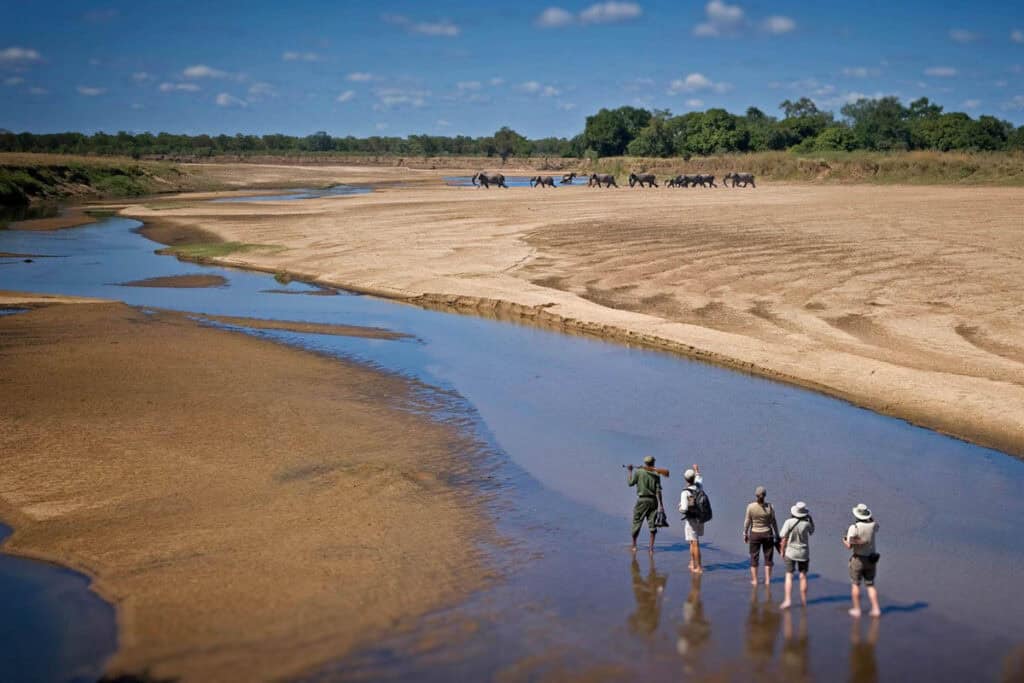
- Highlights: Four of the Big Five are common including huge herds of elephants. Fantastic for leopard sightings. The park is less crowded so it’s possible to get close to animals.
- When to go: Best during the dry season (April – October)
- Wet season (November – March) is also great for seeing loads of birds, baby animals, and cat activity, but roads are often inaccessible. It is also extremely hot and humid during the wet season.
- Who is it best for: Nature lovers who prefer fewer tourists. Photographers will love the lush greenery as a backdrop during the wet months; it’s known as the emerald season.
This 3,500 square mile pristine wilderness has some of the densest wildlife in Africa, including huge herds of elephants. Four of the Big Five live here in large numbers, with the only exception being rhinos. It’s one of the best places in the world to view leopards.
Other animals you can expect to see in South Luangwa National Park are hippos, regal-looking kudu, hartebeest, bushbuck, roan, and sable antelope, plus the rare and distinctly striped Crawshay’s zebra and packs of African wild dogs. Giraffes, wildebeest, and large herds of dainty impala and their fuzzier cousins, the puku, are almost everywhere, plus 400 bird species including nearly 40 birds of prey.
The best place to view animals is at Luangwa River, which meanders through its entire eastern boundary. During the dry season, most animals hang around the river and are easy to find. It’s also the time with fewer mosquitos and less risk of malaria.
Getting there is quite difficult by road and requires a 4×4 vehicle. Most visitors arrive by air, with daily flights from various towns in Zambia served by airstrips at Mfuwe in the central-eastern region of the park and Kapamba to the south.
Lodges in South Luangwa National Park
There are a number of lodges in and around the park, mainly along the Luangwa River.
Mid-range stay: Mfuwe Lodge
As far as convenience goes, the Mfuwe Lodge is hard to beat, as it’s situated close to the airstrip and two lagoons. Don’t be surprised if you see an elephant or two walking through the reception area or past your chalet!
Air-conditioned chalets for couples or families have private bathrooms, living areas, and secluded verandas offering spectacular views. All meals are served in stylish dining areas and they arrange game drives and walking safaris. There is also a pool and spa.
Budget-friendly stay: Flatdogs Camp
Flatdogs Camp is a far cheaper accommodation choice while the safari experience may be just as good. I really liked that they offer a wide range of suites ranging from chalets, safari tents, a tented house with a private pool, and a treehouse all with various sleeping arrangements from 2 to 8 people. Free Wi-Fi, pool, and library complement their facilities and they arrange game drives, walking safaris, and night drives.
10. Etosha National Park, Namibia
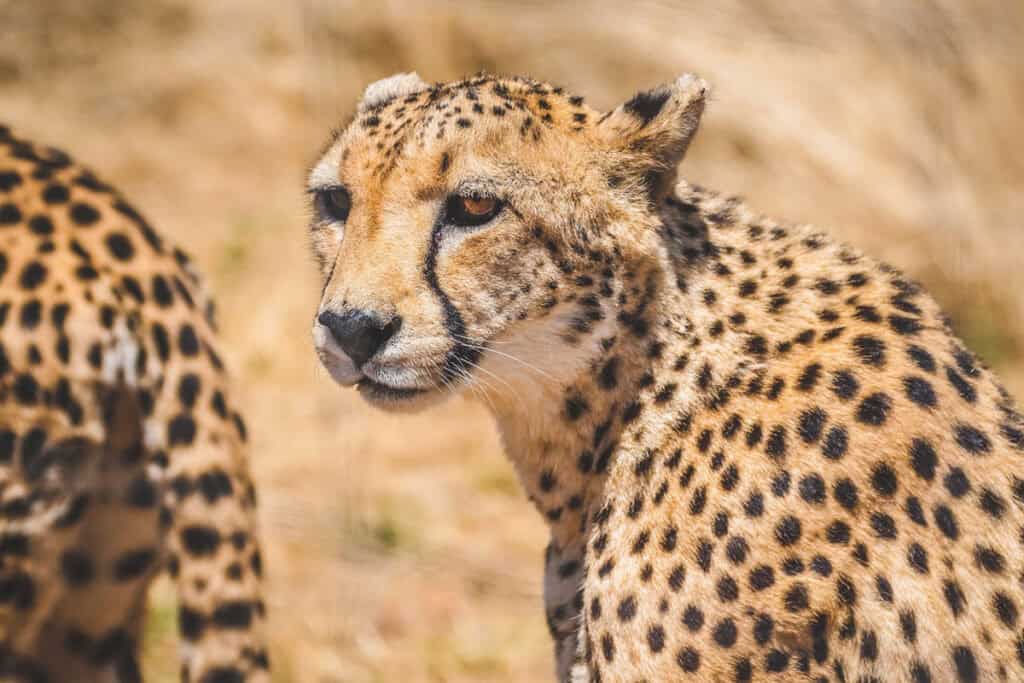
- Highlights: Unusual and unearthly landscape. Lit-up watering holes around numerous camps allow excellent game viewing after dark. Nearby attractions include the Skeleton Coast and the Seal Colony at Cape Cross. If you have time to spare, Sossusvlei and the Fish River Canyon further to the south are worth a visit. Tour operators offer combined safaris to some of these attractions.
- When to go: All year round, although temperatures are best May – September
- Who is it best for: Safari-goers looking for something unique and different
Etosha is a vast nature park covering 8,598 square miles. During the springtime, the park transforms into a lush grassy savannah, attracting animals and birds in huge numbers, including the Big Five. During the wet period, it becomes home to over a million flamingos.
Over 700 black and white rhinos roam freely here, and you’ll also see lions, cheetahs, zebras, giraffes, ostriches, springbok, and gemsbok.
The beauty of Etosha is unparalleled, while the mostly flat terrain makes spotting the wildlife so much easier than many other hilly and densely vegetated parks in Africa. Etosha is also home stunning and distinctive Etosha Pan, which is Africa’s largest salt pan!
The flat terrain makes it ideal for self-drive safaris. The ruggedly beautiful landscape is perfect for anyone who enjoys unique scenery, including photographers.
Lodges in Etosha National Park
Etosha has several accommodation options scattered within and outside the park.
Mid-range stay: Okaukuejo Camp
Okaukuejo Camp is one of the most popular mid-range lodges in Etosha. The self-catering chalets are basic but neat, sleeping 2-4 with private bathrooms. There is a restaurant, pool, and petrol station on site, but the highlight is its floodlit watering hole which attracts lions, elephants, and endangered black rhinos.
Mid-range stay: Onkoshi Resort
On the northeastern edge of the salt pan, the Onkoshi Resort is another popular choice. The entire lodge is built on stilts and has several thatched roof self-catering chalets looking onto the pan. It is mostly run on solar energy so a nice choice for eco-conscious travelers. A restaurant and pool are on site.
Views from the lodge are superb, especially during the rainy season when the pan fills up with flamingos, providing beautiful scenery and unlimited photographic opportunities. Sunsets and the night skies are even more spectacular in this remote corner of the world.
11. Volcanoes National Park, Rwanda

- Highlights: Gorilla and golden monkey trekking. The grave site of renowned conservationist Dian Fossey, although it’s a pretty rigorous hike. Great hiking to Mount Bisoke and other volcanoes and forest surrounds.
- When to go: Dry season between June and October.
- Who is best for: Anyone interested in primates and birds, fairly fit hikers, and nature lovers who want to experience something completely different.
Set in the volcanic mountains in north-western Rwanda, Volcanoes National Park may not have had the exposure as other famous wildlife sanctuaries in Africa had but is home to several hundred endangered mountain gorillas and the less-known golden monkeys.
Other animals that reside in the lush green rainforests are buffalos, bushbuck, a few elephants, and over 200 species of exotic birds.
Lodges in Volcanoes National Park
Splurge stay: Bisate Wilderness Lodge
Bisate Wilderness Lodge provides luxurious villas with spacious verandas offering spectacular views of the surrounding forests and volcano peaks. All meals are freshly picked from their garden to the table and they have a surprisingly rich collection of wines from their own cellar. No luxury is spared here.
12. Ol Pejeta Conservancy, Kenya

- Highlights: The abundance of rhinos. The Big Five and the high density and visibility of other animals. The last two northern white rhinos in the world. Close proximity to Nairobi.
- When to go: Definitely during the dry months, between June and October, to truly appreciate the natural beauty of this region.
- Who is it best for: Rhino and other rare animal enthusiasts and conservationists. Many additional activities are offered at the conservancy as well such as night game drives, walking safaris, horse riding safaris and the opportunity to track lions.
If your dream is to see endangered black and white rhinos, look no further than Ol Pejeta Conservancy.
Situated below the western foothills of Mount Kenya, 200 black and white rhinos make their home here, including the Big Five. Furthermore, this conservancy also houses the last two remaining northern white rhinos in the world.
Other rare species here include the Grevy’s zebra, oryx, and packs of endangered African wild dogs.
During your stay, head 40 miles North to the Laikipia region on a walking safari to see other rare species, including the gerenuk, Günther’s dik-dik, Grevy’s zebras, and a strange but very colorful vulturine guineafowl.
Another fascinating area to visit is the Lewa Wildlife Conservancy to the east, which apart from seeing an abundance of rhinos and other wildlife, is also a sanctuary for Grevy’s zebras.
Lodges in Ol Pejeta Conservancy
There are only nine lodges and tented camps located within the conservancy.
Mid-range stay: Sweetwaters Serena Camp
Sweetwaters Serena Camp is the most popular lodge within Ol Pejeta. It’s a mid-range lodge and so tailors to most budgets. A water hole sits right outside the lodge, allowing you the opportunity to watch wildlife whilst enjoying breakfast. Rhinos can frequently be seen taking a drink here.
Splurge stay: Kicheche Laikipia Camp
Another option is the eco-award-winning Kicheche Laikipia Camp, a small scale luxury tented camp which also has a watering hole that you can marvel at during your stay. This gorgeous camp is the top rated property within Ol Pejeta.
FAQs about African safari destinations
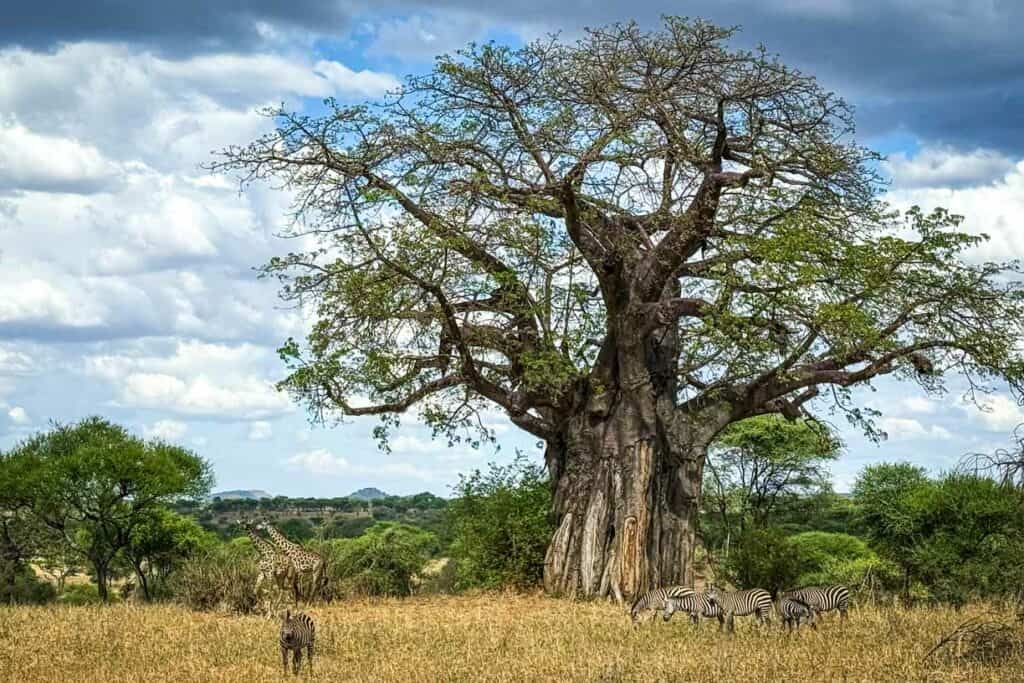
I get it — there’s a lot to think about when it comes to choosing the best place to go on safari.
Let’s go over some common questions and see if we can get them answered!
Where should I go on my first safari?
Kruger National Park in South Africa is a great location for first time safari-goers. It’s extremely accessible, either by organized tour or self-drive, the roads are easy to navigate and there’s a wealth of accommodation available.
Kruger is about a day’s drive from Johannesburg which houses the country’s largest international airport with flights arriving from all over the world. There are also a handful of smaller airports/airstrips within the Greater Kruger region that you can fly into from all over South Africa.
What are ‘The Big 5’ to see on safari?
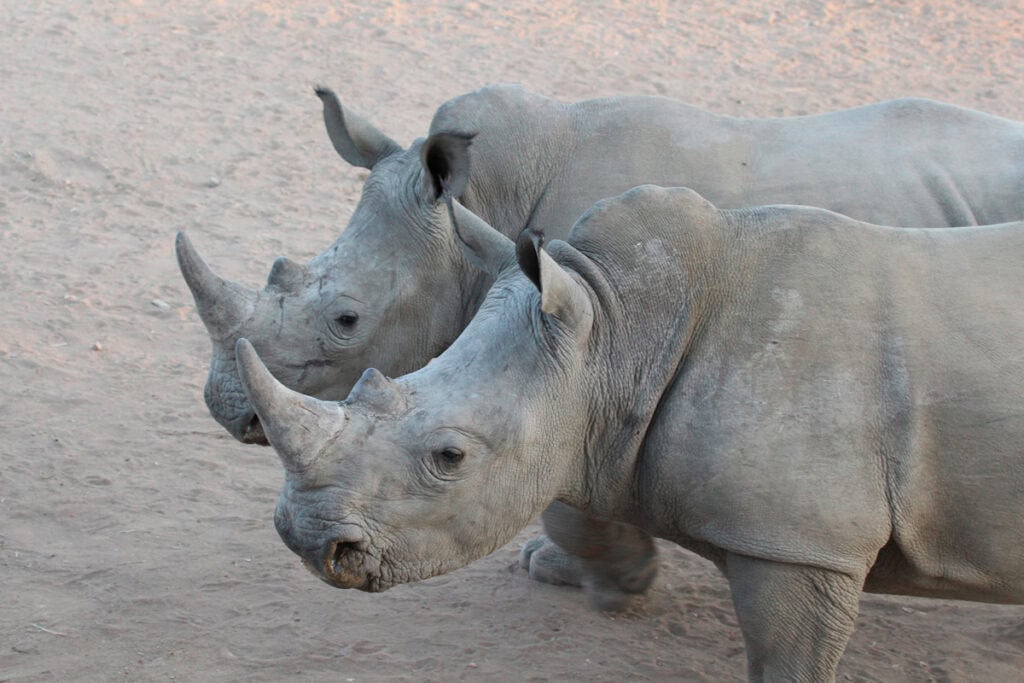
The term ‘Big Five’ refers to the most dangerous animals to see in Africa: elephants, lions, rhinoceros, leopards and African buffalos.
How many days on safari is enough?
Whilst it’s certainly possible to enjoy as little as a 2 or 3 day safari, depending on your location, I’d recommend 5 days as a minimum.
You’ll want to allow yourself enough time to see all the animals on your wish list which can take a few days. I also think spending a little more time on safari allows you to switch off and immerse yourself in nature.
What is the best country to go on safari?

Tanzania is perhaps the best all-rounder safari destination. It’s got a very good safari circuit which combines some of the country’s best parks and reserves and the infrastructure means it’s easy to get from one to another.
You stand a good chance of seeing the Big Five on your safari here as well as the famous wildebeest migration.
Jump to the bottom for a special discount offer on booking your Tanzania safari!
Which African country is the safest for safari?
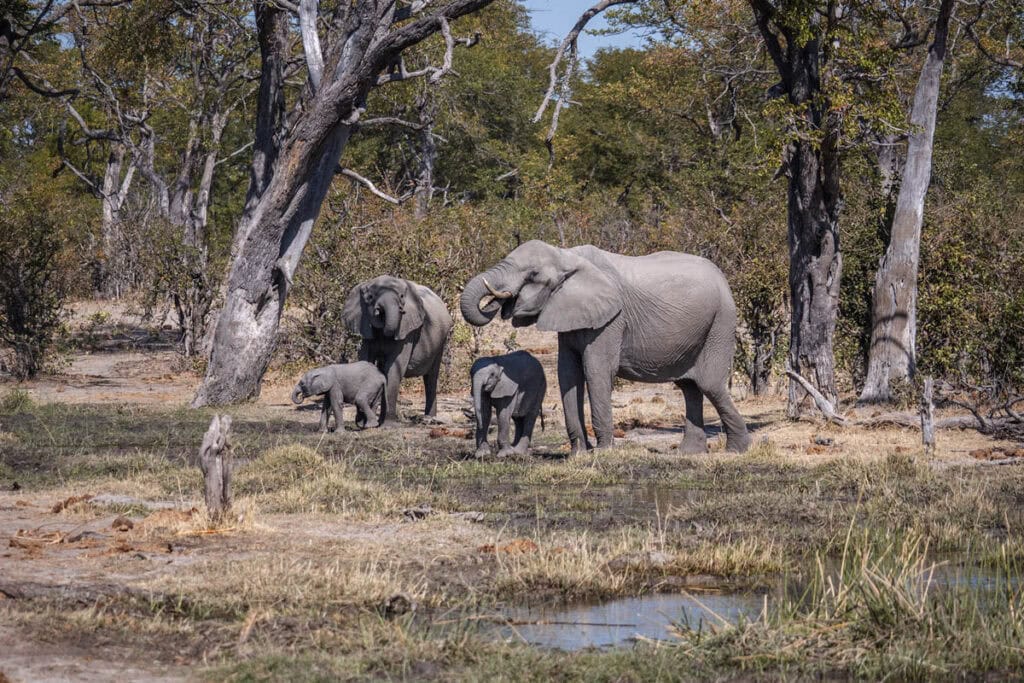
I’ve felt safe on all my safaris to date. Africa gets an unfair reputation for being unsafe but the reality is that the news only tends to report on the worst and fills our minds with fear. The reality is that you’ll have a very pleasant experience throughout much of Africa.
Botswana is perhaps the safest country to go on safari as the country is extremely stable and as the safari locations are remote, you don’t encounter many people. Therefore petty thefts are a lot less common than places like South Africa, for example. I also didn’t experience any hassle in the towns.
Which country has the best Big 5 safari?

Many African countries house the Big Five and so you have a chance to encounter them no matter which country you choose to go on safari to.
However, I’d probably say that South Africa is the most reliable place to see the Big Five as Kruger National Park has healthy numbers of them all.
Special offer on booking your Tanzania safari
Amanda here, Director of Content for Two Wandering Soles, with a plug about my experience and passing on some savings to you…

Planning a safari in Tanzania can get complicated! There are lots of safari companies out there that promise the lowest rates (at the expense of your comfort!), or only offer ultra-expensive luxury safaris, so it’s hard to know who you can trust…
Safari Republic is an owner-operated boutique safari company with a combined decades of experience and in-depth knowledge of the Tanzania safari circuit. I stumbled upon them when doing research for my Tanzania safari trip and was blown away by the attention to detail and level of support I received.
Owner, Jackie, has a fantastic network of partners she works with across Tanzania to create exceptional experiences. They only employ the highest caliber guides, ensuring you will be in good hands from the moment you touch down in Arusha, to the moment you depart.
We also loved to read about their responsible tourism practices and values around sustainability and community support.
Plus, their prices are competitive, considering everything they offer. And I can attest to this as I did a ton of research gathering quotes and prices from other companies before settling on Safari Republic.
Take it from Jackie herself…
“I have 10 years experience of putting together [Tanzania safari] itineraries and I know how to spend a budget effectively for the most impact… We are a small company and happy to go the extra mile for guests.”
Bonus offer for YOU!
I had such a good experience traveling with Safari Republic throughout Tanzania, I knew I wanted to continue that relationship, and introduced Jackie to Katie and Ben. Before we knew it, a partnership was born 🙂

About the guest author
Ella McKendrick is a traveler with a passion for everything Africa. She first set foot on the continent when she was 17 years old and fell head-over-heels for it. Since then she has been back more times than she can count and has visited over 10 African countries. You can follow along on her adventures on her personal website, Ella McKendrick.
You may also like…
- What to Wear on Safari + FREE Packing Checklist!
- Best Time to Visit South Africa: When to Go & When to Avoid!
- Ultimate Tanzania Safari Itinerary (5+ days!)
- How Much Does a Tanzania Safari Cost? (+ tips to save!)
Save this article on Pinterest for later!
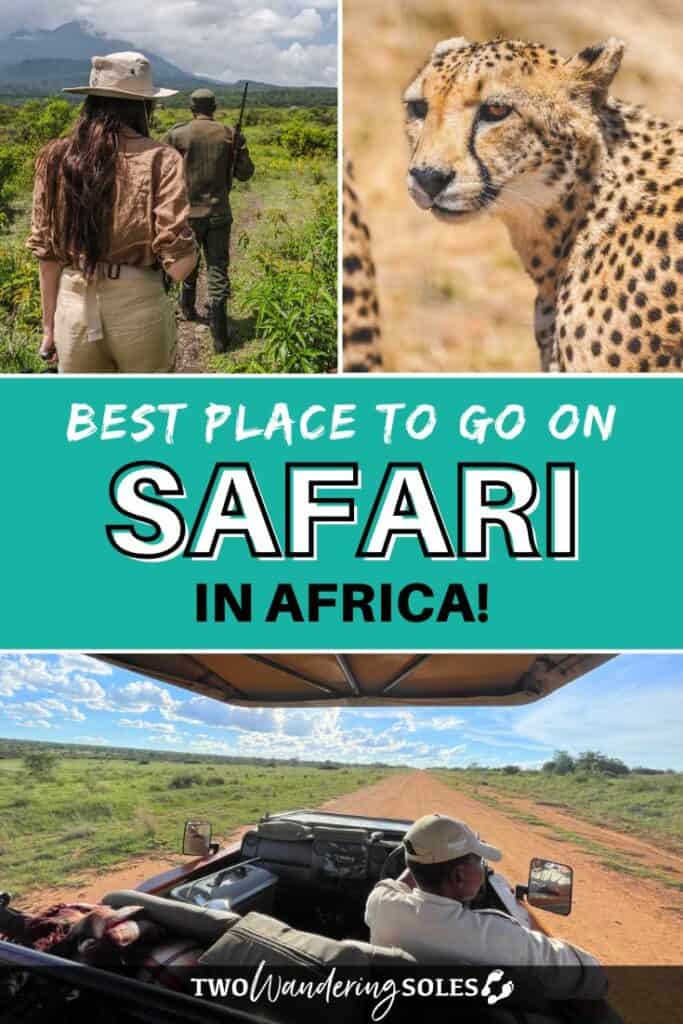
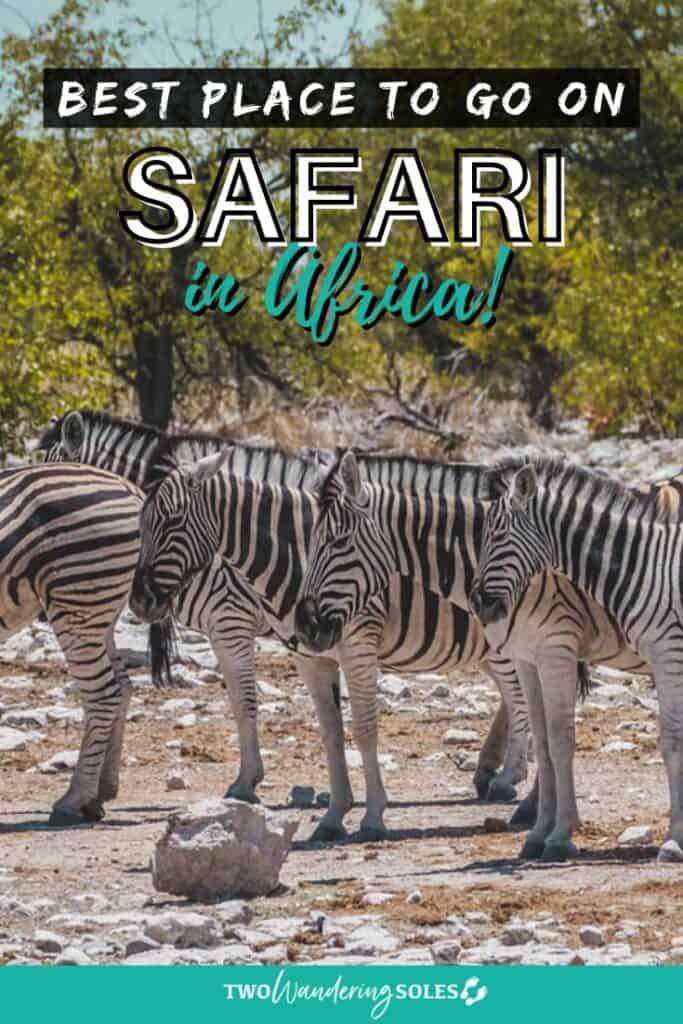
We want to hear from you!
We hope this article helped you narrow down the best place to go on safari for your travel style and preferences! Are you planning a a trip to one of these safari destinations and still have questions? Let us know in the comments below and we’ll do our best to get back to you!

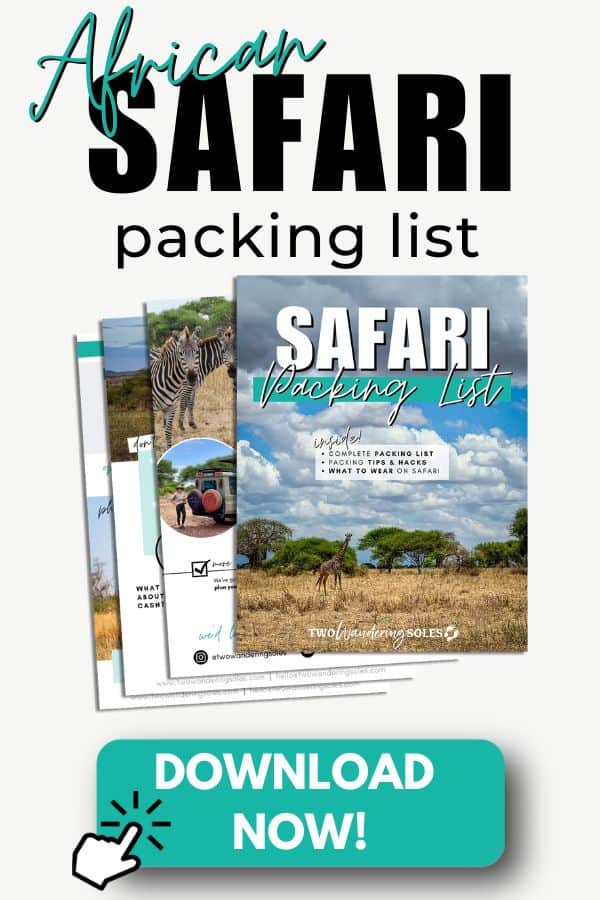

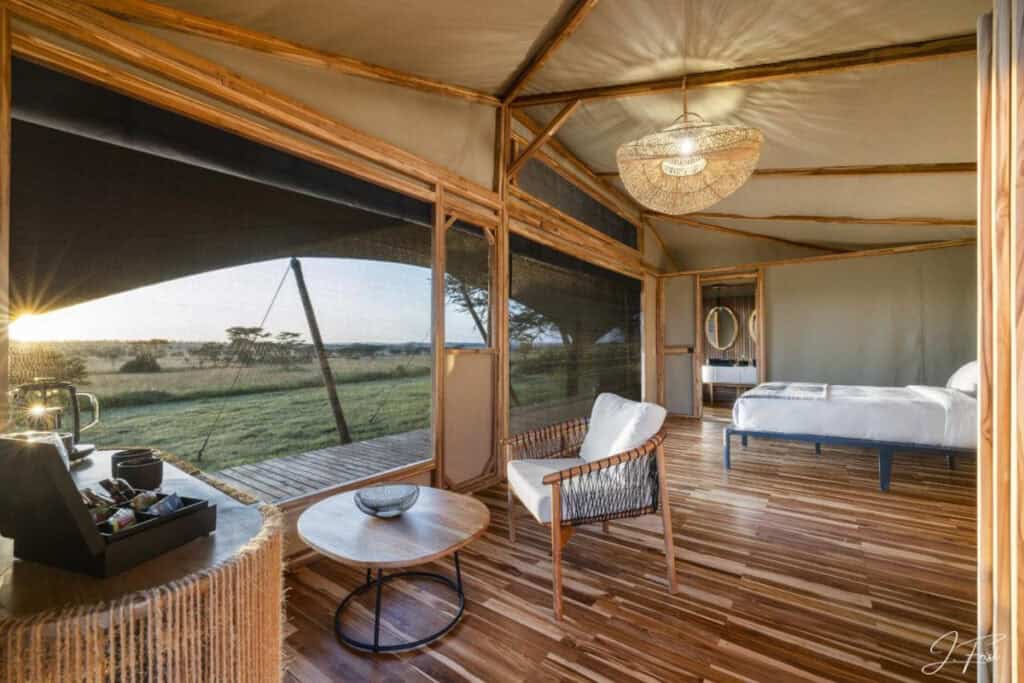

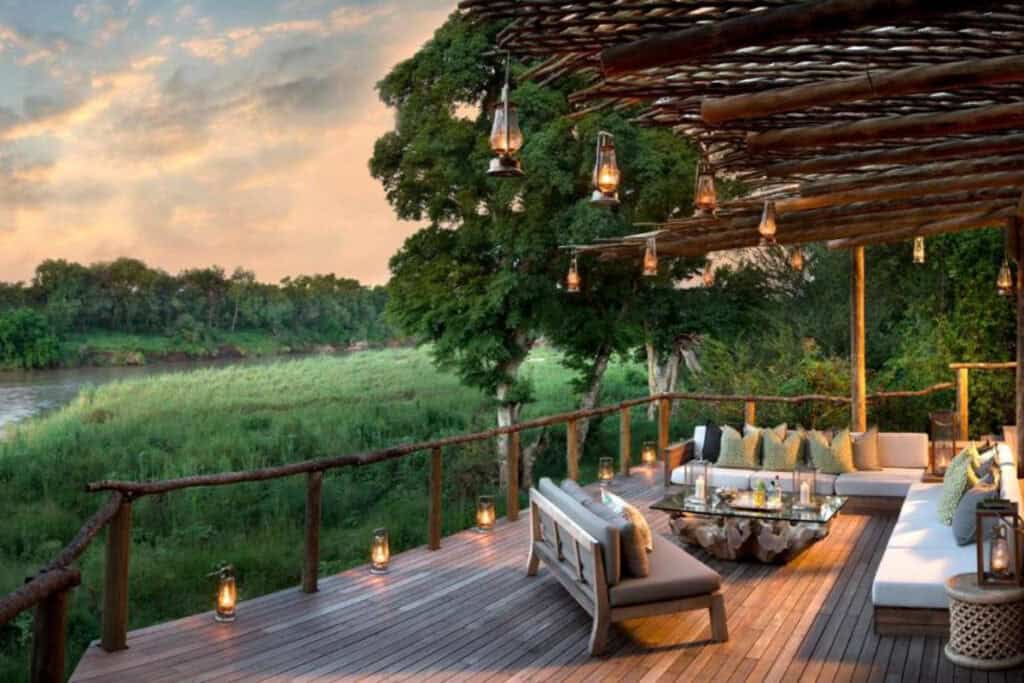
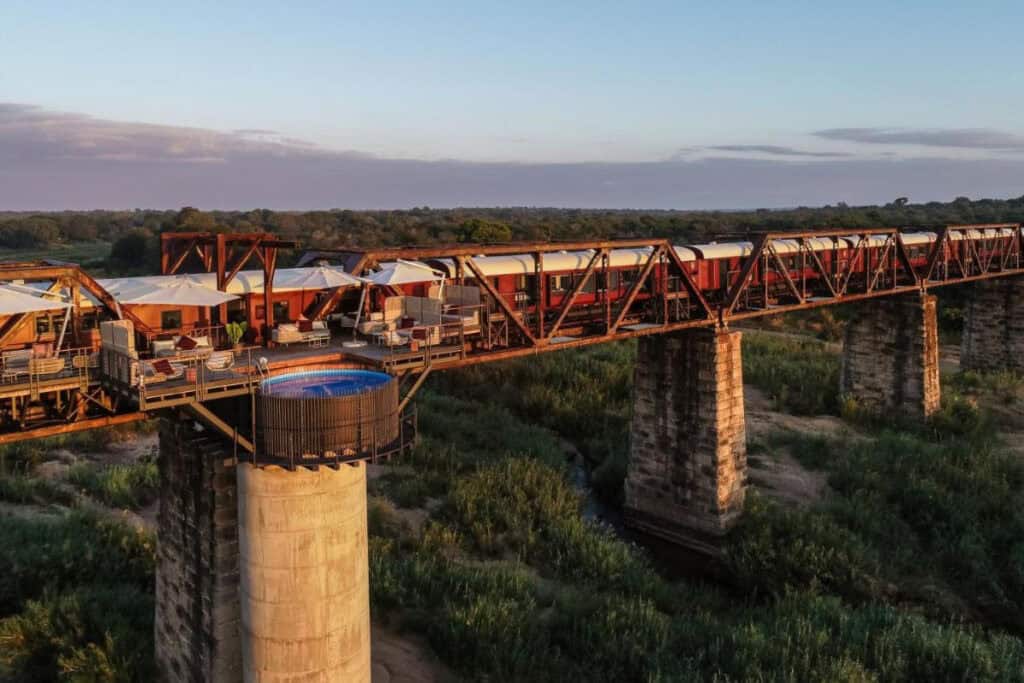

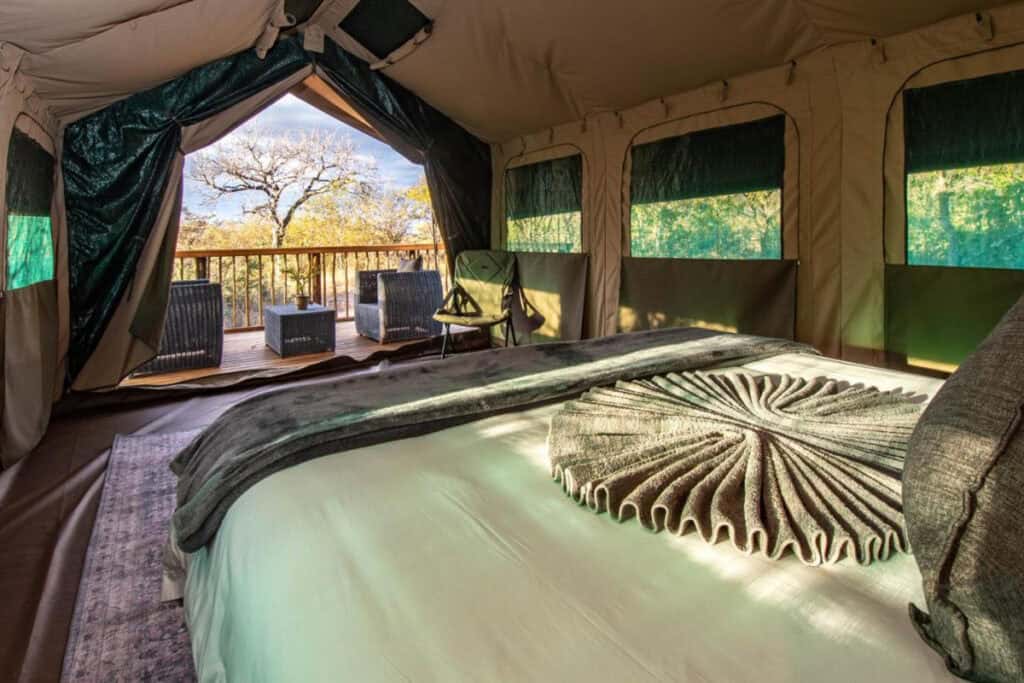
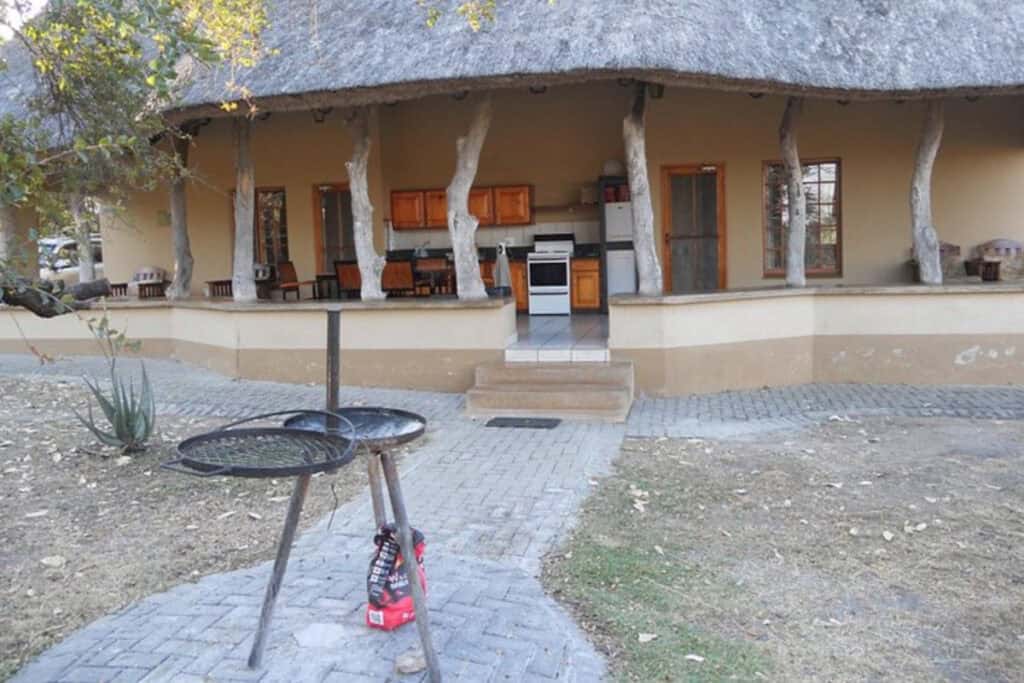
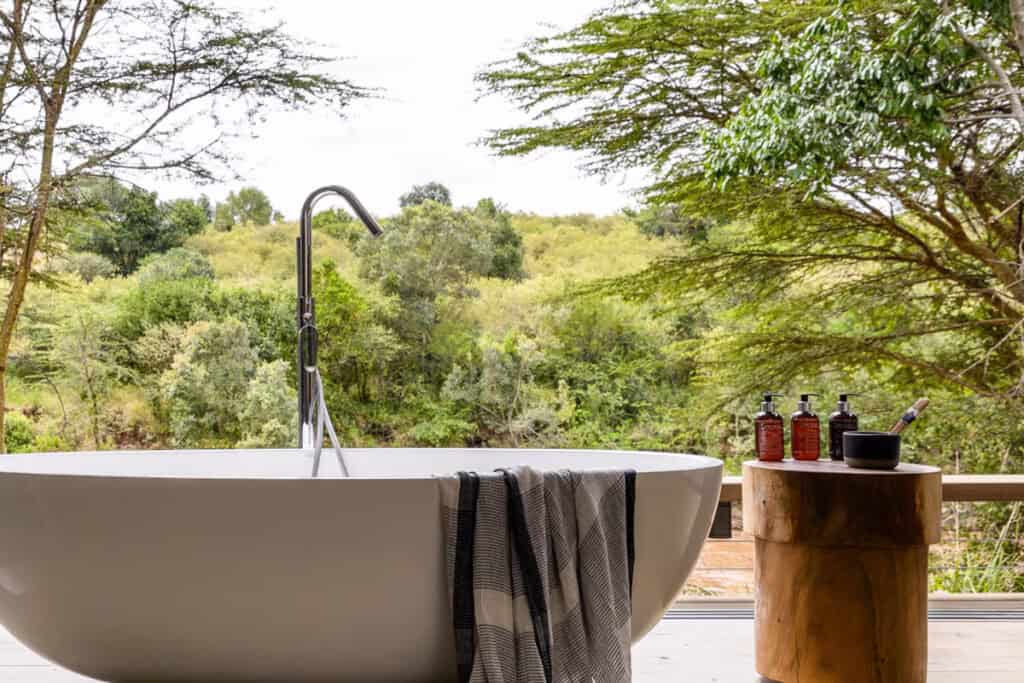
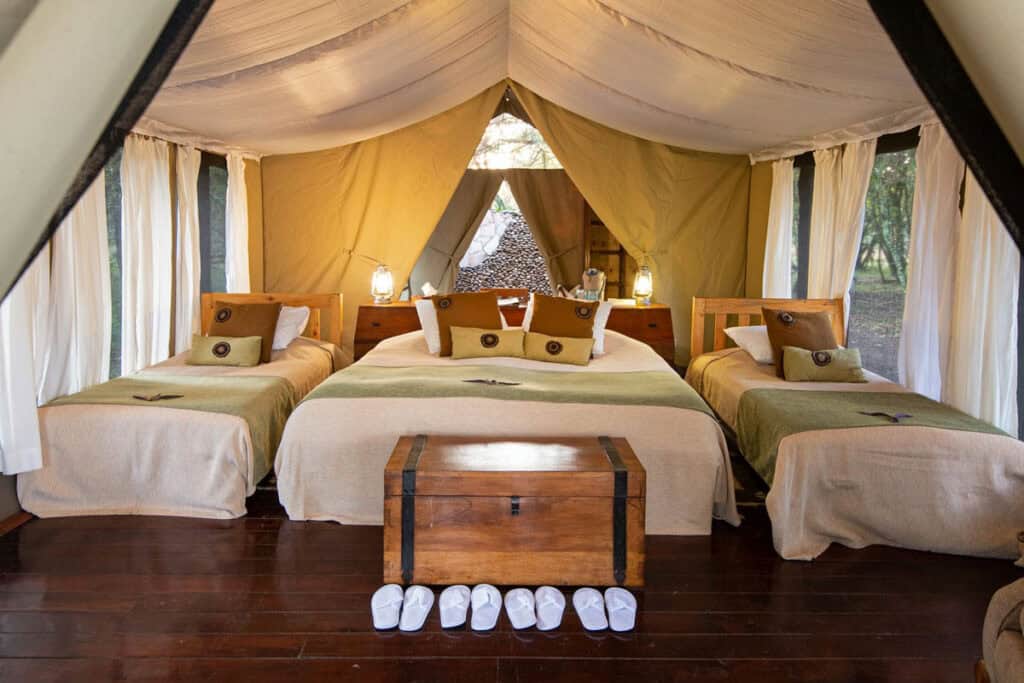


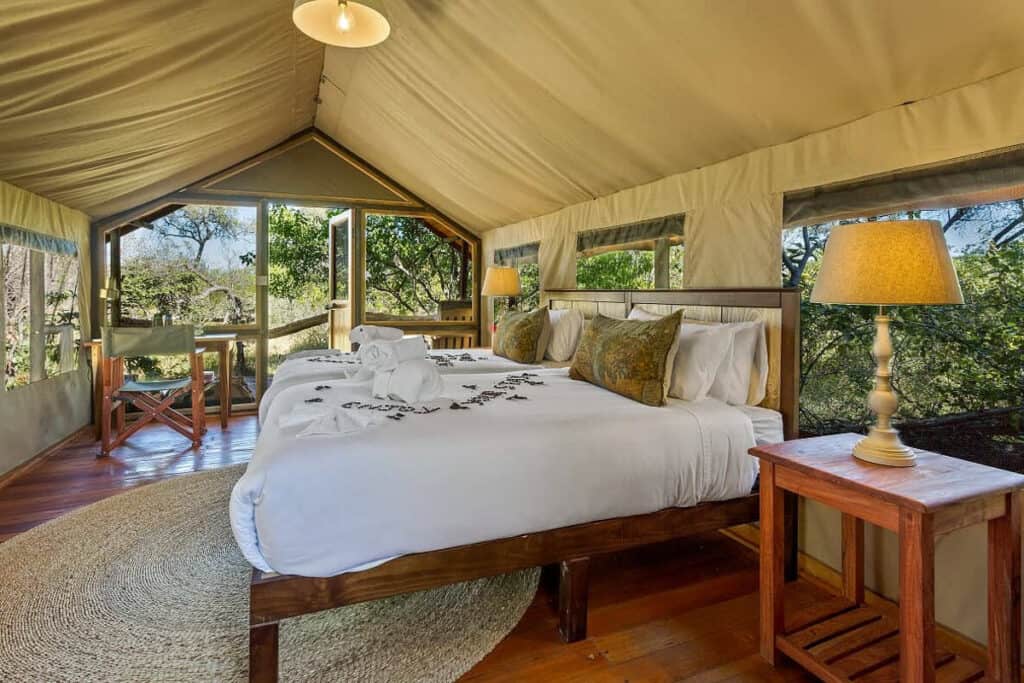
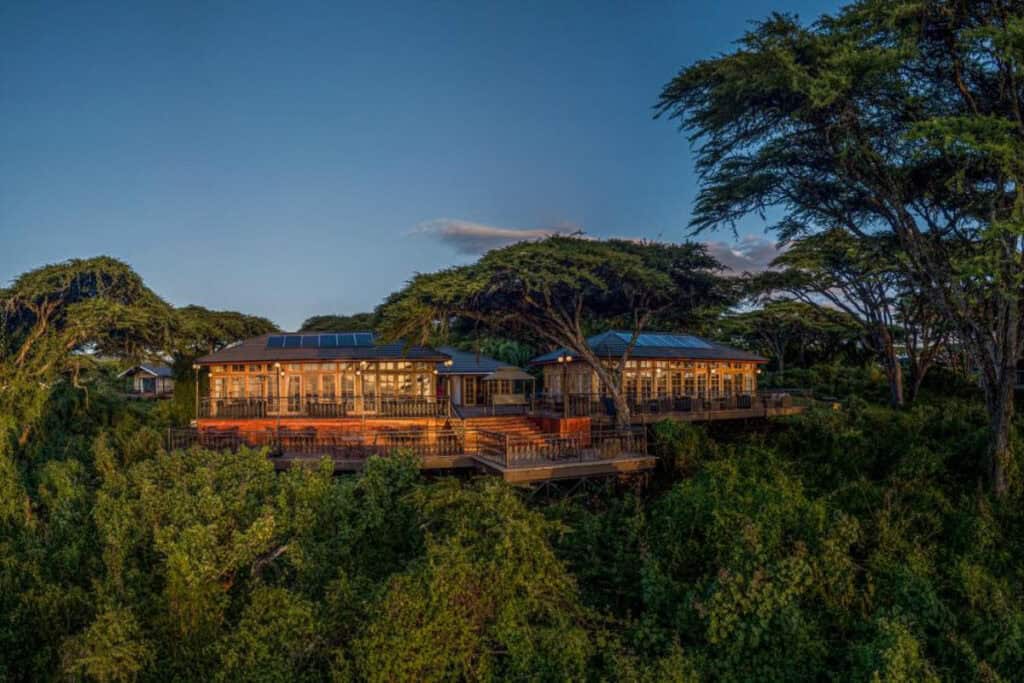


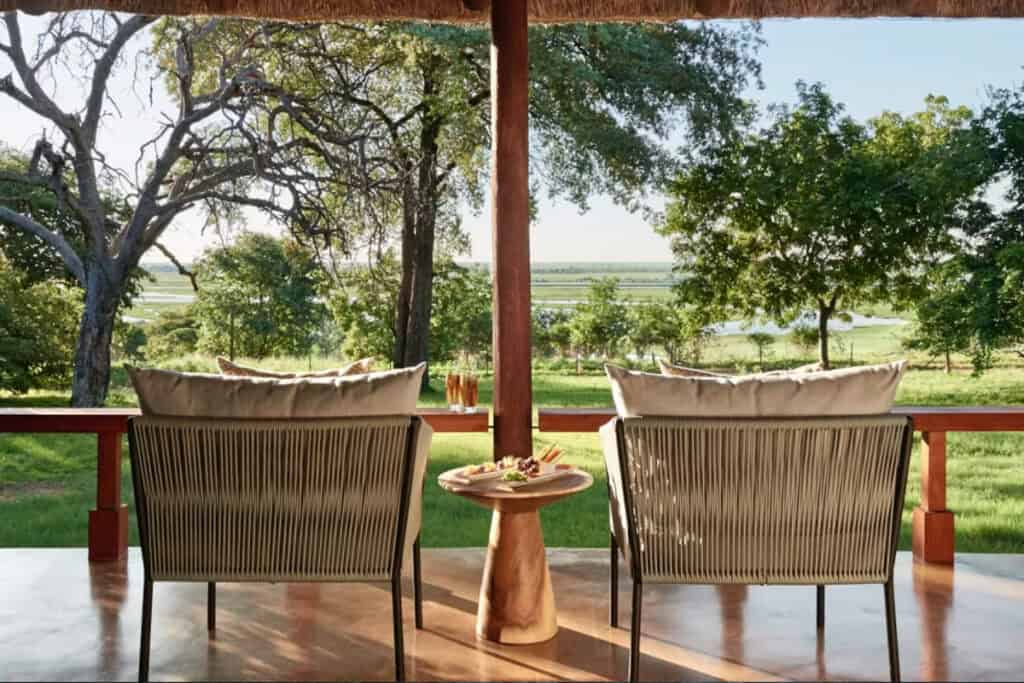
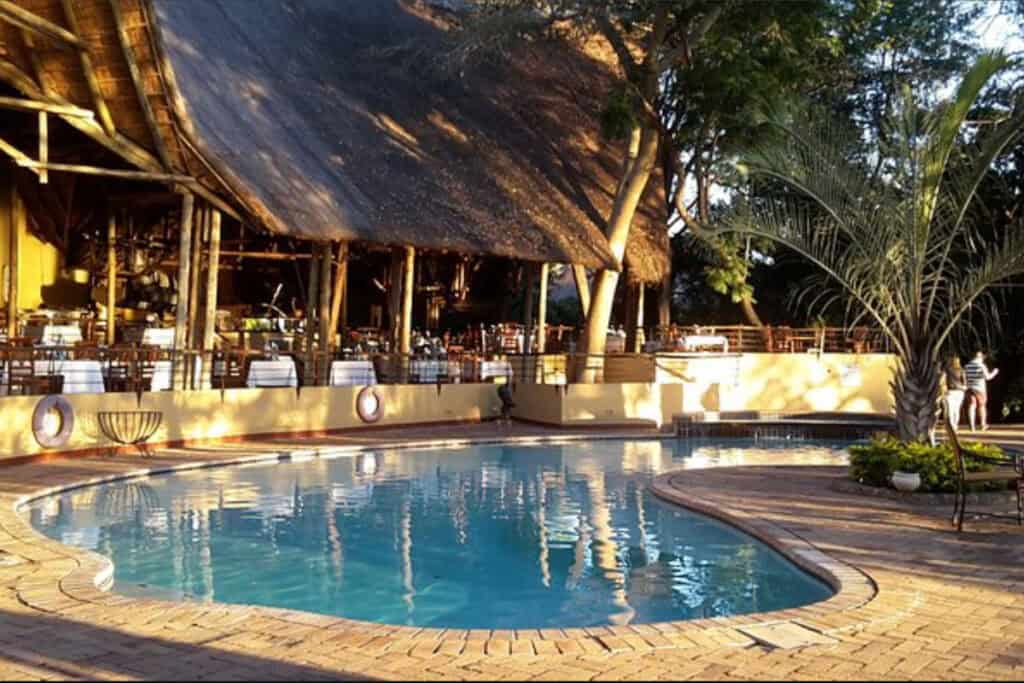
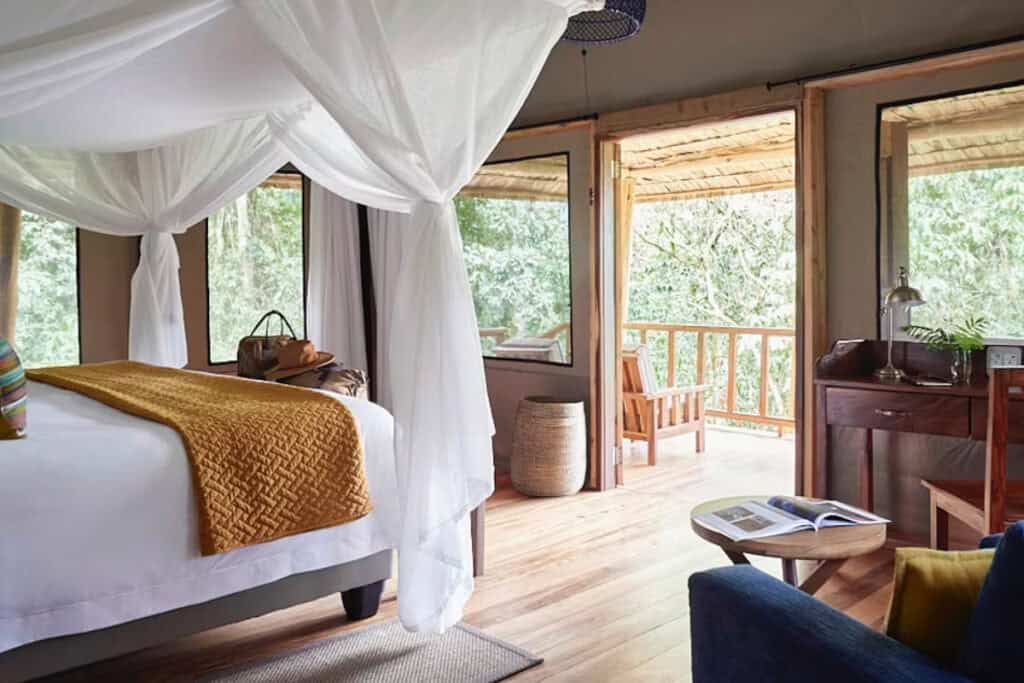




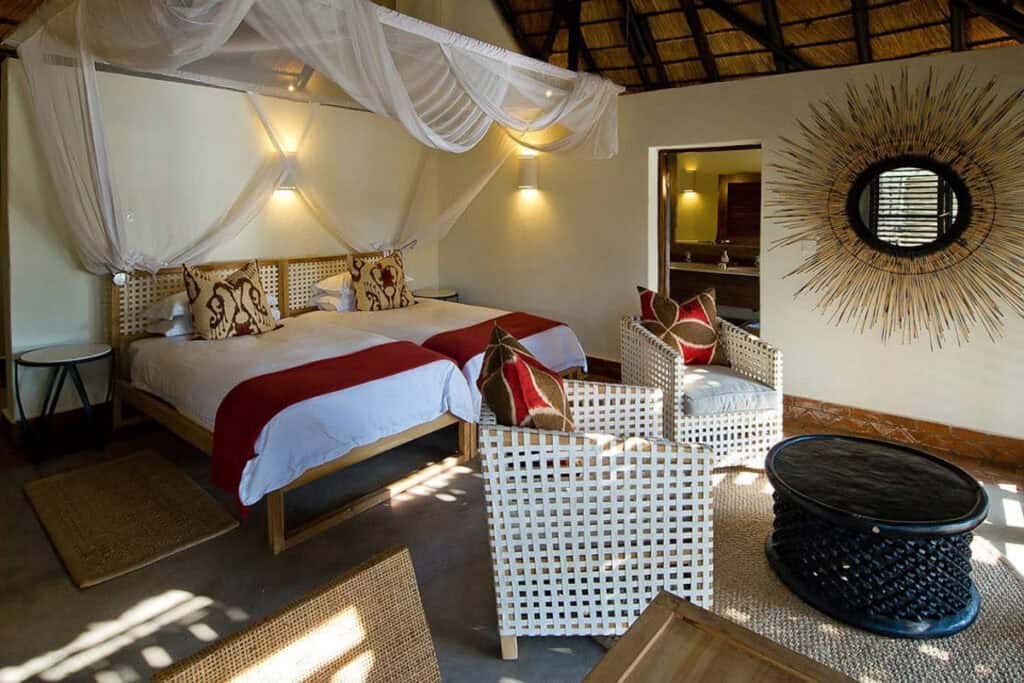
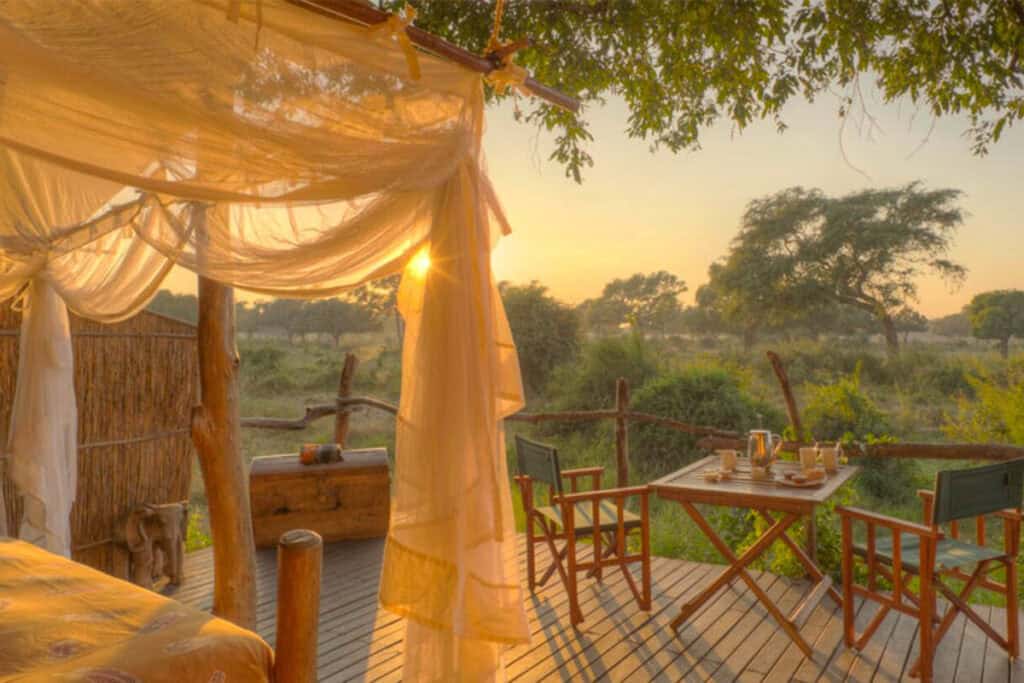

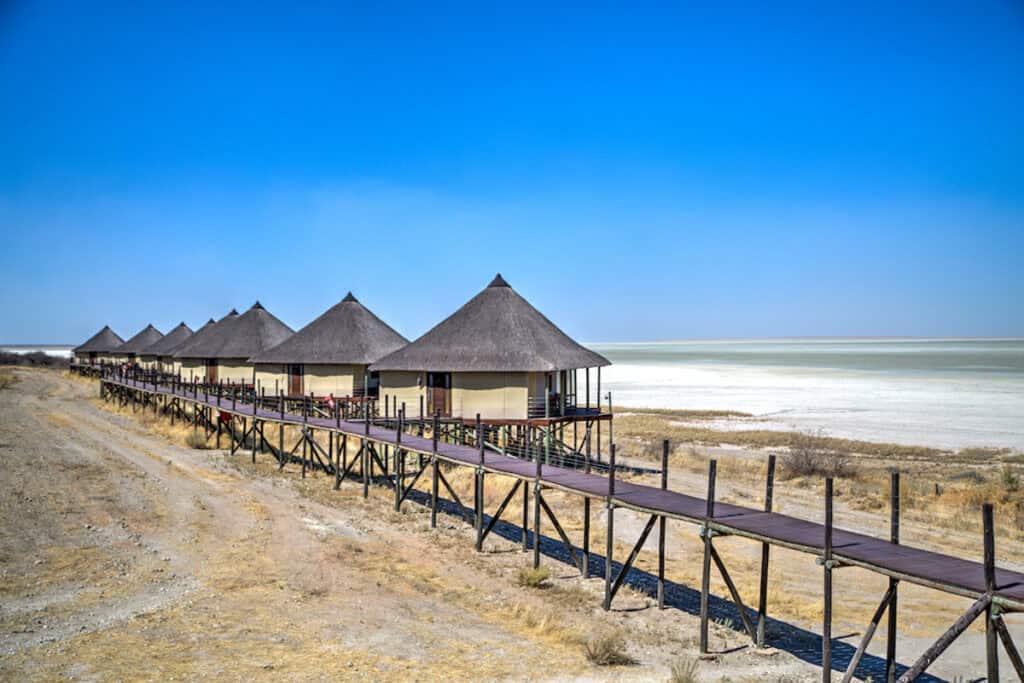

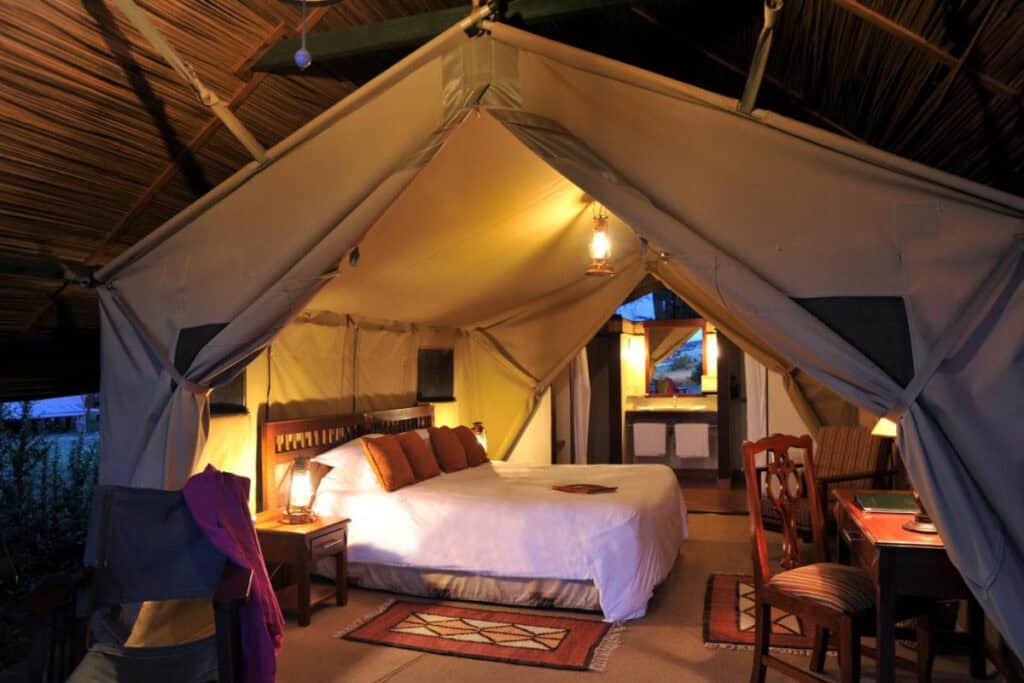

Thank you for including all the details. Your above information will definitely helpful for all the travelers. I really enjoyed your post. You include all the points and I really agree with them.